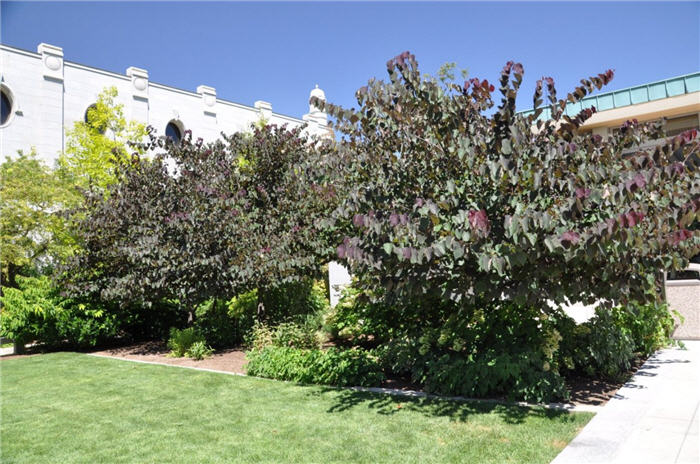| Botanical Name: Cercis canadensis 'Forest Pansy' | |
| Common Name: Forest Pansy Redbud |

-
Anatomy
-
Culture
-
Design
Plant Type
Tree, Shrub
Height Range
12-25'
Flower Color
Pink, Red
Flower Season
Spring
Leaf Color
Bronze, Purple, Red
Bark Color
Brown, Grey
Fruit Color
Brown, Green
Fruit Season
Winter, Fall
Sun
Full, Half, Shade
Water
Medium
Growth Rate
Moderate, Slow
Soil Type
Clay, Loam
Soil Condition
Average, Rich, Poor, Well-drained
Soil pH
Acid, Neutral
Adverse Factors
n/a
Design Styles
English Cottage, Formal, Mediterranean, Ranch, Spanish, Woodland
Accenting Features
Multi-trunk Tree, Showy Flowers, Silhouette, Specimen, Unusual Foliage
Seasonal Interest
Winter, Spring, Summer, Fall
Location Uses
Background, Entry, Shrub Border, Foundation, Parking Strip, Patio, Walls / Fences
Special Uses
Screen, Mass Planting, Shade Tree, Small Spaces
Attracts Wildlife
Butterflies
Information by: Stephanie Duer
Photographer:
Photographer:
-
Description
-
Notes
Forest Pansy Redbud is a lovely, deciduos, small tree, well suited for mass planting, smaller spaces, entries, or patios. It grows to about 20 feet tall and 20 to 25 feet wide with a rounded crown and low branching habit. Bark is a dark brown to reddish-brown. Small, rosy-pink flowers appear along the bare branches in spring. Reddish-purple leaves emerge after the flowers and are large and heart-shaped; mature to a warm maroon with a yellow-orange fall color. Lovely winter silhouette.
Plant in rich, well-drained soil. Not suitable for sandy soils. Will grow in sun to light shade; watering recommendation is for full sun. See guides for planting instructions. Some forms will have pea-like seed pods after flowering, providing winter interest.